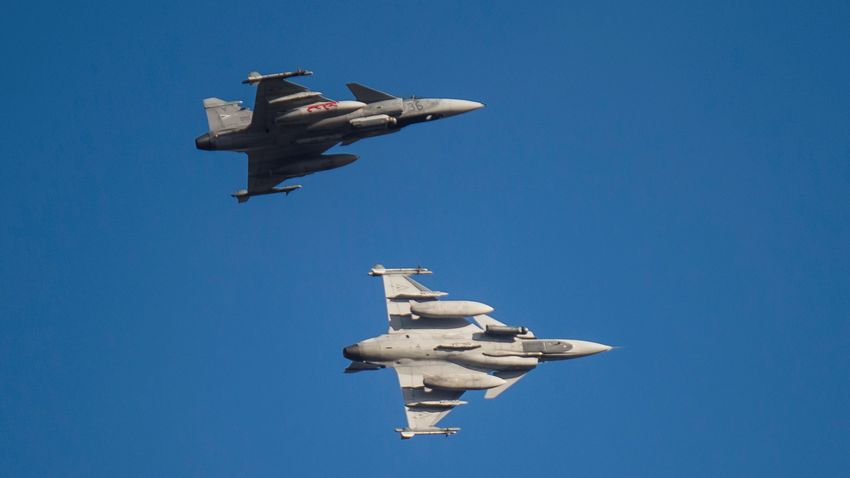The Hungarian Defense Forces scrambled Gripen fighter jets on March 21 after a Turkish-branded civilian plane traveling from Moscow to Istanbul received a bomb threat.
The plane received the bomb threat over Polish airspace, which led the NATO Joint Air Operations Center ordered Hungary to intercept and escort the plane.
Upon arrival in Hungarian airspace, the Turkish insignia was identified by fighter jets and then escorted to the Hungarian-Romanian border, where it left Hungarian airspace. The Gripens remained in the area after the plane left Hungarian airspace and performed a patrol task, after which they returned to the base in Kecskemét.
Last Monday, a similar occurred when a Serbian-registered civil Airbus A-319 aircraft traveling on the Belgrade-Moscow route also received a bomb threat.
The plane was turned back at the Hungarian-Slovak border, while NATO’s Southern Joint Air Operations Center alerted the Hungarian Army’s Gripen fighters, who soon identified the Serbian A-319 aircraft and escorted it out of Hungary’s airspace to Serbia.
The Hungarian Gripen pair remained in the border airspace until the reversed plane landed in Belgrade, they wrote.
In a third incident at the beginning of the month, an unmanned and obsolete Soviet-made military drone overflew Hungary before crashing in the Croatian capital of Zagreb. It was a Tu-141 reconnaissance drone that flies a pre-programmed path and its direction cannot be altered in-flight. It remains unclear whether it belonged to the Russian or the Ukrainian air force.






